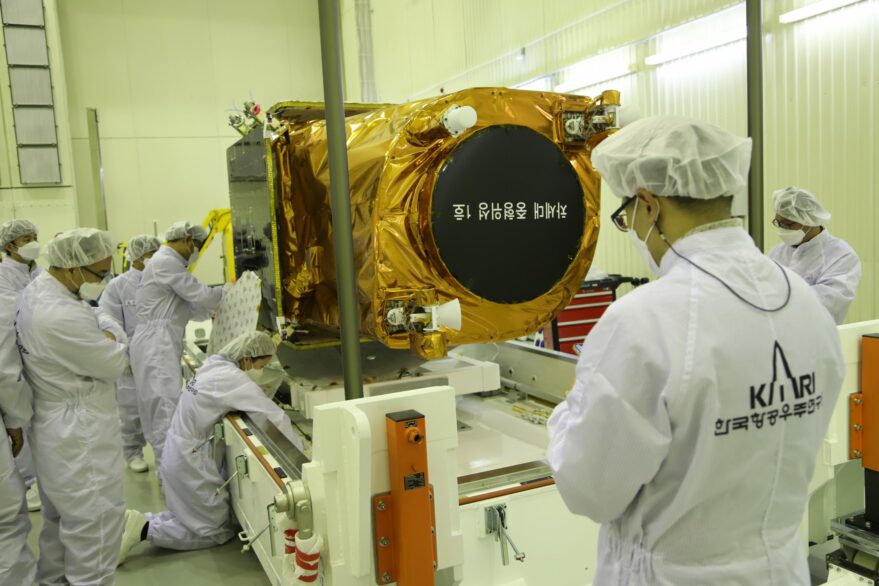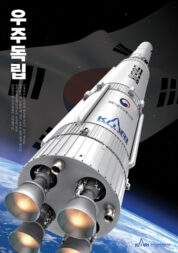SEOUL, South Korea — The chief of South Korea’s space agency has vowed to spin off near-term applications to the private sector and refocus the agency on long-term investments that “won’t pay off until 2050.”
This was part of a broad reform plan unveiled by Lee Sang-ryool, president of the Korea Aerospace Research Institute (KARI), during his May 6 online news conference, the first event of this kind since he took office March 23 for a three-year term.
“I will pursue change,” Lee said. “At least I will get it started to bring a paradigm shift from the conventional way of doing work.” The veteran aerospace scientist who has spent 35 years at KARI said in the NewSpace age, the agency’s role should be redefined as “exploring projects that the private sector can’t afford to, developing core technologies with far-reaching impact or truly futuristic technologies that can be realized 30 years later” — and everything else should be left in the hands of private players.
With this transition possible only when the Ministry of Science and ICT agrees, Lee expressed his willingness to discuss the issue with the ministry.
“I’m looking for a win-win solution,” he said.
The chief said nothing had been decided yet as to what the agency will choose to explore as a long-term project and what to yield to the private sector. No matter what, it seems that Lee’s leadership will fuel South Korea’s ongoing journey toward the domestic satellite industry being driven by the private sector.
The journey got off to a smooth start with the successful launch of CAS500-1 remote sensing satellite in March. KARI jointly developed the 500-kilogram satellite with a group of selected industry partners starting in 2015, sharing its core technologies and information with the latter from the get-go, the first case of this kind. With inherited assets, Korea Aerospace Industries (KAI), the sole aircraft maker here, is leading the development of another 500-kilogram-class Earth observation satellite, CAS500-2, under KARI’s guidance. The satellite is slated to be sent into orbit during the first half of 2022 on a Russian Soyuz-2 rocket.

If this goes as planned, KARI will take its hands off the development of 500-kilogram-class spacecraft by 2025 at the latest, and shift its focus to satellites in other categories that still require the government’s support.
Lee said the envisioned reform will be backed by three new task forces, each of which will be responsible for high-profile national projects, long-term innovative projects, and regulatory reform, respectively.
Wider defense cooperation
He also expressed the need for KARI to widen cooperation with Agency for Defense Development (ADD), a state-run defense technology developer, for quick technological advancement. ADD is credited with developing a range of cutting-edge weapons, including Hyunmoo ballistic and cruise missiles, Anasis-2 military communications satellite and active electronically scanned array radar.
“There are many fields of research and investment where the United States and China have already gone into but we have done nothing,” he said. “We need to decide on fields we need to go into through discussion with scholars and industry partners, one of which is ADD. I’m going to meet with the ADD chief soon to discuss partnership.”
KSLV-2 on track for October

Meanwhile, the nation’s first fully homegrown space rocket, KSLV-2, is on track for its scheduled demonstration launch from the Naro Space Center in Goheung in October, according to Lee. The 200-ton three-stage rocket is currently being assembled without a glitch in the process, he said.
“Once the assembly of the flight model’s first, second and third stages are completed, we will assemble the entire model and transport it to the launch pad,” Lee said. “The launch pad is also nearly complete and the project is currently going ahead smoothly.”
If the demonstration launch is successful, the rocket will make a second launch with a real satellite on board in May 2022 from the same launch site.
Boasting four 75-ton liquid engines in its first-stage booster, the three-stage KSLV-2 is meant to carry a 1.5-ton satellite into low Earth orbit. The second stage has a single 75-ton engine and the third stage has a seven-ton engine.
